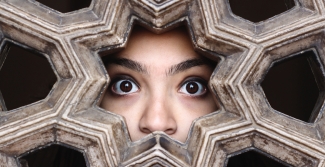The significance of eyes around the world
Photo by Simon Matzinger on Unsplash
The eye is a powerful symbol in cultures all over the world. It has shaped many cultures and beliefs over thousands of years. Here, we look at some of the most fascinating examples.

Photo by JaneB13 on Pixabay
The Eye of Horus
In Ancient Egypt, the Eye of Horus was a symbol of power, health and protection. Horus was an ancient Egyptian sky god, most commonly depicted as a falcon.
Legend has it, Horus and Seth (the god of disorder, storms and violence) once engaged in a brutal battle, resulting in Horus’ eye being removed. The eye was restored by Hathor, Horus’ wife and the goddess of joy, love and motherhood. However, Horus eventually sacrificed his healed eye to bring his dying father back to life. After this tale, the eye of Horus became a symbol of sacrifice, healing, restoration and protection.
In modern culture, the eye of Horus is associated with the Eye of Providence (the eye on US dollar bills), which symbolizes the eye of God watching over people. On the dollar bill, the Eye of Providence is surrounded by two mottos: ‘Annuit Coeptis’ and ‘Novus Ordo Seclorum’ which translates to ‘He approves our undertakings’ and ‘New Order of the Ages’. Conspiracy theorists associate this depiction of the eye with the mysterious secret society – the Illuminati.

The Evil Eye

Photo by yagmurkokusu on Pixabay
Belief in the evil eye dates to Classical Antiquity (between 8th century BC and 5th or 6th century AD). Many cultures believe that the evil eye is a curse, which can inflict injury or bad luck.
Charms, jewels and decorations designed to ward off evil are common in many cultures: Hawaiians know the evil eye as ‘maka pilau’ (directly translated to rotten eyes), while Italians call it ‘malocchio’ (bad eye). In Portuguese, its name translates as a poetic ‘mau-olhado,’ which means ‘the act of giving a filthy look’.
The traditional anti-evil eye blue charm originates from Turkey, where it’s called the Nazar Boncuğu. The Nazar Boncuğu is commonly hung in doorways or worn as a pendant; you can even find it on the tailfins of the Turkish airline Fly Air.
The most common glass amulets that protect owners from the evil eye look like a dark blue teardrop, centered around a light blue eye, and created from an amalgamation of molten glass, iron, copper, water and salt.

Photo by KRiemer on Pixabay
The Eye of Fatima (or Hand of Fatima) is a palm-shaped amulet, popular throughout the Middle East and North Africa. It features a design much like the evil eye. This charm is common in many religions around the world: Levantine Christians call it the Hand of Mary, while in Islamic cultures it’s called the Hand of Fatima, in honour of one of the daughters of the Prophet Mohammed.
In Judaism it is referred to as Hamsa, which literally translates to ‘five’. Jewish people consider the five fingers of the hand as symbolic reminders to use all five senses to praise God.
The hand-shaped charm is traditionally carved from silver, a metal historically associated with purity and healing. In some cultures, the eye on the charm is traditionally painted red with the blood of a sacrificed animal and hung in the doorway of expectant mothers to ensure healthy pregnancies.
From the deserts of Ancient Egypt to the markets of Istanbul, the eye has become synonymous with protection, healing and good luck.








